Lucius Fermentation Co.
KC Wine Co
KC Labs Mourvedre
Light and fruit forward, watermelon jolly ranchers but way better. carbonic fermentation. — 8 years ago
Cruse Wine Co.
Rorick Vineyard Chardonnay 2015
Another solid effort from Michael Cruse! Chardonnay from the Rorick Heritage Vineyard in the Sierra Foothills. Pours a medium (-) straw-gold hue. Medium/medium (+) concentration of aromatics of bruised yellow apple, fresh pineapple, honeysuckle, wet stone, some bread dough and aged cheese rind leesiness, creme fraiche, and a bit of slight savory, almond-y oxidative character. On the palate, there's more yellow apple and pineapple that is joined by a bit of ripe Bosc pear, along with more wet stone, aged cheese rind, honeysuckle, and a slight fennel edge to the finish. Medium to medium (+) acid, dry, medium bodied with lush texture from neutral oak, malo, and lees. There's also the slightest bit of phenolic edge because the juice is left on skins overnight prior to fermentation. Alcohol is medium (+) and is a bit too noticeable on the palate for my tastes but is still gentle enough to overlook. Wish there was a bit more acid but there's still definitely enough to at least keep it in balance enough. Overall, pretty good stuff and interesting for sure; if there's one word you *can't* use to describe Michael's wines in general, "boring" is that word. — 8 years ago
Waters
Washington State Rosé 2016
60% Syrah 40% Viognier co-fermentation, "straight from the press with no additional skin time". Pale white tinted with gold and pink. Herbal and melon notes in nose. Watermelon, perfumed floral and lemon pith with spritz in mouth, cherry with length and black pepper notes in finish. Slight astringency on front of tongue. Easy drinking, light and dry but good acidity. Exciting and different, worth seeking out — 8 years ago

Sanguis
My Soul Is Rested Proprietary Red Blend
What a Christmas treat! Co-fermentation project by Mattias (petite sirah with Roussane). Nose of flowers and stewed fruits. Chewy and tannic, melted chocolate, dark fruits - flat out delicious. — 9 years ago
Bedrock Wine Co.
Griffin's Lair Vineyard Syrah 2014
Creamy boysenberry. Beautiful brightness with the co-fermentation of 3% viognier — 9 years ago
Cloudwater Brew Co.
DIPA v4
Dry hopped during fermentation. A little sweet (9% ABV), but balanced. — 9 years ago
Hobo Wine Company
Camp Sonoma County Chardonnay
One of my favorite wine makers- Kenny Likitprakong of Hobo wine Co. He uses native yeast no commercial fermentation aids or additives. High quality wine for a great price (13.95 @ the Co-op). On lees for a few months then beau real French for 2 months. Vibrant and fresh with a creamy, slight oak finish. Lemony with a long finish. — 10 years ago
Mathilde et Yves Gangloff
La Serene Noire Côte-Rôtie Syrah 2009
Slight floral quality to the edgy sweetness and gorgeous black fruit. I suspect some co-fermentation here (Viognier). Lovely, lively, and lithe on the palate. Plenty of acids here, so this will pair with nearly any meats. Just to reiterate, this is not your typical Paso syrah (no offense), but an elegant rendition of the grape. — 11 years ago
Domaine Bois de Boursan
Châteauneuf-du-Pape Red Rhone Blend 2010
Give me a straw and I'll be set for the day and into the night. Co-fermentation kind of blew my mind. — 11 years ago
Cardinal Point
White Blend 2013
Co fermentation of Petit Manseng and Chardonnay. Grassy with notes of green apple. — 12 years ago
Dirty & Rowdy
Unfamiliar Mourvedre 2017
Via Brooklyn Wine Exchange: Hardy Wallace is a bit of a superstar in the "New California" wine scene. He began his wine career in Atlanta, publishing a blog on the subject called Dirty South Wines. In 2009, he won a high-profile contest held by Murphy-Goode Winery in Sonoma, called "A Really Goode Job." Hardy beat out 2,000 other applicants for this stunt-job, acting as a sort of social media/pr coordinator for the winery. Upon completion of his six-month contract, he went to work for several legendary winemakers in the valley, including Cathy Corison (Chappellet, Corison) and Ehren Jordan (Turley, Failla). During this time, Hardy and his wife Kate also partnered with friends Matt and Amy Richardson to form a small label called Dirty & Rowdy Family Winery. For their first vintage, they purchased one ton of Mourvredre, the semi-obscure Provencal and Spanish variety that is rarely seen outside the context of a red blend in California.
Knowing that Dirty & Rowdy could distinguish itself in a ocean of Napa Valley Cabernet Sauvigon with this curious and brawny grape, Hardy & Co. quickly bet the farm on Mourvedre, as a vehicle to express different styles of winemaking as well as the terroir of multiple regions within California. Flash-forward to current day, where Dirty & Rowdy has become the king of California Mourvedre, bottling multiple cuvees each year that sell out almost immediately.
Dirty & Rowdy is a well-known emblem of the domestic natural wine scene as well. Hardy buys almost exclusively from organic growers, and doesn't filter, acidify, or alter his wines in anyway. Sulfur use is extremely low, and the overall philosophy is to be as hands-off as possible.
That is until 2017. The fact that Dirty & Rowdy has a wine to present at all for this vintage is a miracle. Flashback to mid-July last year. The growing season wasn't going all that well. Tremendous heat spikes created growth problems at almost all the vineyards Hardy sources grapes from. It's hard enough to monitor vine issues on one vineyard, let alone almost a dozen parcles scattered around six counties stretching from the Central Coast all the way out to the Sierra Foothills. A case of shingles went from bad to worse, spreading to his eyes. Hardy completely lost his vision for three days. Kate's brother Angus, a ski instructor and artist from Aspen, drove out to lend a hand with the impending harvest. On his way out, he was involved in single-car crash along a treacherous stretch of interstate and tragically lost his life.
Then the fires started.
Hardy and Kate, like many other producers who make wines in communal "crush" facilities located in urban areas around Sonoma and Napa, had hoped to ride out the fires and continue their wine production. The fires spread rapidly and threatened both their house and their winery, located in Petaluma. They left their wine in the midst of alcoholic fermentation, one of the most crucial and stressful times of the year for a winemaker even in the best of situations. When they were able to return eight days later, the winery was luckily undamaged. The wine, however, didn't fare so well. most vats had experienced "stuck fermentation," meaning that the native yeast died before eating all the sugar. Hardy, like most forward-thinking American winemakers, is a firm believer in natural fermentation. This no-brainer aspect to his wine was now an virtual impossibility. Plus, the vats contained high levels of volatile acidity or "VA," which creates an unfavorable "nail polish" quality in wine. A little bit of VA can give lift and energy to wine. Too much, however, renders the wine undrinkable.
At this point, Hardy thought to sell all the wine off in bulk for pennies on the dollar. Or perhaps create a second label to distance himself from what was surely going to be an atypical wine. Instead, he decided to combine almost every vat of his Mourvedre for the vintage (including lots of his most expensive fruit), and go into the "Unfamliar" territory of interventionist winemaker. Stuck lots were restarted using a variety of methods. When the wines finally fermented to dryness, he borrowed a "reverse osmosis" filtration system, perhaps the most modern of all the modern wine doohickeys. This contraption allowed Hardy to literally suck out the volatile acidity to bring it down to a pleasing level, as well as moderate and stabilize the alcohol. Then he filtered the wine. Basically, he did all the things he never thought he would ever want to do to wine.
The resulting wine is something that we have never seen before, both from Dirty & Rowdy and the Mourvedre grape, in general. Much of the wine fermented carbonically in tank, so the expression is much closer in style to Beaujolais than Bandol. It is so light on its feet, in fact, that Hardy believes this wine could take a serious chill. (Hence the reason we are trying to get you to try a California Mourvedre in the middle of a sweltering summer!) The tannins are pretty much non-existent, and the fruit is pretty and pure. There is a lovely little purple flower note in the middle of the wine, and a hint of smokiness on the finish (smoke taint from the fires? Or is this just some sort of phantom association because of the context? Either way, it adds depth and personality to this gorgeous wine.)
Since their "Annus Horribilis" of 2017, order and peace has been restored in Hardy & Kate's life. Their daughter Maple turns two in a few days. They celebrated the free-spirited life of their brother with scores of his friends and ski students at Aspen Mountain's opening day last November. The motto of the celebration, "Live Like Angus," has inspired hundreds and hundreds of beautiful social media posts. And this year's Spring release of Dirty & Rowdy wines from earlier vintages has quickly sold out around the country, gobbled up by ravenous collectors, restaurants, and retailers (like this one.)
But to Hardy, this "Unfamiliar" wine, which doesn't fit stylistically or financially into the rest of the D&R portfolio, will always represent something completely different: The best of a unthinkably bad situation. "It took a lot of blood, sweat, and tears to get that wine into bottle," Hardy wrote to us, just this morning. "Fortunately, it is fresh, delicious, soulful and somewhat of a Phoenix Rising from 2017. Though it is our least expensive wine ever, it is the wine I am most proud of." — 7 years ago
Lightning
Paso Robles CdP Blanc White Blend 2015
Aug 12.
First wine at Lightning Wines that we are tasting today at Brasswood in Saint Helena. Clear and pale yellow. Very fruity and floral on the nose with notes of white peaches, water lilies, and a mix of citrus. Very crisp and refreshing with moderate acidity (7/10) and light bodied. Lots of lemon and unripe tropical fruits, something like melon. Would be interesting to taste over multiple hours to see how it develops. Long and lingering finish, nice and tangy. Drink till 2022. (90+)
No racking with partial malolactic fermentation. Aged in 2/3 neutral French oak (old Chardonnay barrels) and 1/3 Stainless Steel. All co-fermented; 55% Grenache Blanc, 30% Piquepol Blanc and 15% Marsanne. — 9 years ago
Samsara Wine Co.
Melville Vineyard Pinot Noir 2013
Backstory: Tasted this at the winery and loved it so much that we bought a bottle to take along with us to Mexico. Chad Melville is the owner and winemaker at Samsara. He's also the chief winegrower at Melville Winery.
Winemaking Process: Single vineyard wine with grapes harvested from the Cargasacchi vineyard, which is in the middle aka sweet spot of Santa Rital Hills. 75% whole cluster fermentation with native yeast. 50% in new French oak barrels for 22 months, followed by 12-month ageing in the bottle. Unfiltered.
Tasting Notes: Colour is ruby red with some clarity, no sediment. On the nose, it has blue fruit, cherry, cassis, cigar, asphalt, lambskin leather and pronounced earthy notes. On the palate, it is medium-bodied with full, mouth-filling texture. Red fruit notes appear first, and then the taste turns into an earthy, allspice notes, and finishes off with something so bright and refreshing that reminds us of orange peel. The tannins are soft. End palate is long, around 10 seconds, marked by minerality and cherry. I love this wine because unlike many Pinot Noir from Santa Barbara, it isn't over extracted and not too sweet (like fruit pastille). There's a fleeting burst of sweet red fruit flavour on the mid palate and the flavour quickly transits to earthy notes and tannins. It's a more earthy Pinot Noir but yet still elegant and ready to be consumed. At $55, I think it's well worth the price. — 9 years ago
Patrick Sullivan
Britannia Creek White Blend
Delicious and funky. Co-fermentation gives it a lovely combined feeling with a delicious richness full mouth feel and lightly bitter critic acidity. I had it with a pork and it was 10/10 — 10 years ago
Cardinal Point
Green White Blend 2013
Co-fermentation. Young. Steel. Balanced Acidity. Vino Verde Style. Granny Smith Apple. Slight Effervescence. — 11 years ago
DuMOL
Jack Robert's Run Sonoma Coast Syrah 2012
Floral lilies, black and blue fruits, licorice and allspice. Sharply focused and very pure. Fresh and sweetly herbal with a little forest floor and evergreen edge. White and black pepper. Detailed and nuanced. Blackberry, soy and bitter dark chocolate. Good drive and power. Youthful finish; quite tightly wound. Apple skin acidity and lingering orange zest. Decant now and drink to 2025.
Dutton-Gregori vineyard. Hand harvested and sorted. 8% Viognier co-fermentation. Aged 17 months in 33% new French hogsheads. Released November 2014. — 11 years ago
Enfield Wine Co.
Heron Lake Vineyard Chardonnay 2013
Massive, perfumed nose of 100 scents. Full mouthfeel with some tannin, so I get the joy of the fermentation happening on skins. Beautiful and begging for food. — 8 years ago
Château Brane-Cantenac
Grand Cru Classé en 1855 Margaux Red Bordeaux Blend 2005
I have a six-pack of this 05. I thought after 10 years in bottle, it would be interesting to check in on its evolution. While tasty, I’ll wait another 8-10 to open another. Even after 2-3 hours in the decanter, it’s still a very young adolescent. On the nose, slightly sour blackberries & dark cherries, dark currants, baked black plum, haunting blue fruits, anise, whiff of spice, steeped tea, dry stones, dry crushed rocks with dry top soil, caramel, vanilla with fresh & dry red florals. The body is thick & full. Tannins are starting to round out. It’s velvety on the palate. The fruits are; bright, fresh & ripe and really show the greatness of the 05 vintage. Dark currants, blackberries, dark cherries, baked black plum, haunting blue fruits, baked strawberries, cherries, raspberries on the long set, dark spice, clay & loamy dry top soil with crushed rocks, dry stones, cigar with ash, graphite, dry stems, slight herbaceous character, mint, used leather, clove, caramel, vanilla, fresh & dry red florals with violets. The round acidity is about perfect. The structure and length are still strong. The balance is in harmony. As for the long finish, it’s lush, ruby, rich and well polished. Photos of; Chateau Brane Cantenac, large wood vats, Henri Lurton and Estate vines. Producer notes and history...Chateau Brane Cantenac began in the early 17th century. At the time, the estate was known as Domaine Guilhem Hosten. Even that far back, wine was produced from the property. In fact, the wine was so highly regarded it was one of the more expensive wines in Bordeaux. It sold for almost as much money as Brane Mouton. This is interesting because of who went on to buy the vineyard in the 1800’s. The Baron of Brane, also known as “Napoleon of the Vineyards”, purchased the Chateau in 1833. At the time of the sale, the estate was called Chateau Gorce-Guy. To get the funds needed to purchase the Margaux vineyard, the Baron sold what is now called Mouton Rothschild, which was at the time of the sale, known as Chateau Brane-Mouton. Not such a good move with hundreds of years in hindsight! In 1838, the Baron renamed property taking his name and the name of the sector where the vineyards were located and called it Chateau Brane Cantenac. The Chateau later passed to the Roy family, who were well-known in the Margaux appellation in those days, as they owned Chateau d’issan. Moving ahead to 1920, the Societe des Grands Crus de France, a group of merchants and growers that owned several chateaux located in the Medoc including; Chateau Margaux, Chateau Giscours, and Chateau Lagrange in St. Julien, purchased Chateau Brane Cantenac. Five years later, M. Recapet and his son-in-law, François Lurton, took over Brane Cantenac along with Chateau Margaux. Lucien Lurton (the son of François Lurton) inherited Brane Cantenac in 1956. Today, the estate is still in the hands of the Lurton family. Brane Cantenac is owned and run by Henri Lurton. After being given the responsibility of managing Brane Cantenac, it was under the direction of Henri Lurton that large portions of the vineyard were replanted. Vine densities were increased, the drainage systems were improved and the plantings were also, slowly changed. The vineyard of Brane Cantenac is planted to 55% Cabernet Sauvignon, 40% Merlot, 4.5% Cabernet Franc and .5% Carmenere. Carmenere was used for the first time in the 2011 vintage. The only other Chateau I know that still uses Carmenere is Clerc Milon. The 75 hectare Left Bank vineyard of Brane Cantenac is essentially unchanged since it earned Second Growth status in the 1855 Classification. At least that is the case with the 45 hectares used to produce the Grand Vin of Brane Cantenac. Those 45 hectares are planted surrounding the Chateau. Those vines are located just in front of the Cantenac plateau and are the best terroir that Brane Cantenac owns. They have other parcels, which are further inland and much of those grapes are placed into their second wine, Le Baron de Brane. Those additional hectares can be divided into 3 main sections. Behind the Chateau, they have 15 hectares of vines on gravel and sand, 10 hectares across the road with sand, gravel and iron and a 13 hectare parcel with gravel called Notton, which is used for their second wine. The vineyard is planted to a vine density that ranges from 6,666 vines per hectare on the plateau and up to 8,000 vines per hectare for the vines located behind chateau, in their sandier soils. The higher levels of vine density are always found in the newer plantings. The terroir of Brane Cantenac consists of deep gravel, sand and clay soil. Experiments in the vineyards are currently looking at becoming more organic in their vineyard management. Today, more than 25% of Brane Cantenac is farmed using organic farming techniques. It is expected that over time, the amount of hectares farmed with organic methods will be increased. Brane Cantenac has gone through 2 relatively recent modernization’s in 1999, when they added began adding the first of their smaller vats to allow for parcel by parcel vinification and then again in 2015 when they completed a much more complete renovation of their cellars and vat rooms. While Brane Cantenac is a traditional producer, they are no stranger to technology as they were one of the first estates to embrace optical grape sorting machines. In very wet vintages, they can also use reverse osmosis. To produce the wine of Chateau Brane Cantenac, the wine is vinified in a combination of temperature controlled, traditional, 22 oak vats, 18 concrete tanks and 20 stainless steel vats that vary in size from 40 hectoliters all the way up to 200 hectoliters, which allows for parcel by parcel vinification. 40% of the fermentation takes place in the oak vats. The oldest vines are vinified in vats that are selected to allow for separate parcel by parcel vinification. The younger vines are vinified more often together in the same vats. However, the Carmenere is entirely micro-vinified, meaning that those grapes were completely vinified in barrel, using micro-vinification techniques. This can also happen because the amount of grapes produced is so small. Some vats can be co-inoculated, meaning they go through alcoholic fermentation and malolactic fermentation simultaneously. At Chateau Brane Cantenac, malolactic fermentation takes place in a combination of French oak tanks and barrels. The wine of Brane Cantenac is aged in an average of 60% new, French oak barrels for 18 months before bottling. The initial 2 months of aging is done with the wine on its lees, which adds more depth to the wine. There second wine is Le Baron de Brane. Le Baron de Brane is not new. In fact, previously, the second wine went under the name of Chateau Notton, which took its name from one of the main parcels where the grapes were planted. During the late 1950’s and into the 1960’s, having a second wine was important as the estate declassified 3 vintages, due to extremely poor, weather conditions in 1956, 1960 and 1963. Production of Chateau Brane Cantenac is about 11,000 cases per year. — 8 years ago
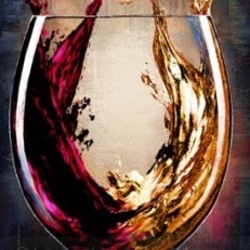
Don Manuel Villafañe
Cabernet Franc
Nice surprise, this is a co-fermentation of Cab Franc and Petit Verdot that works very well. Fresh and fruity. — 9 years ago
Cloudwater Brew Co.
DIPA v5
Dry hopped after fermentation. A northern English take on California IPA - not overtly hoppy but still lots of citrus flavours. — 9 years ago
Mission Trail Cider Co.
Champagne Style Hard Cider
The best cider I have tasted in years: made from 29 hand-picked heirloom apple varietals and with a secondary Charmat fermentation giving it both incredible richness of fruit and a perfect effervescent lightness akin to the best Champagnes. A strong 10/10 for this one. #cider #Charmat #MissionTrail — 9 years ago

Cardinal Point
Cabernet Franc Viognier 2012
Co-fermentation. Oaked. Mellow. Blackberry. Cherry. Vanilla. Pinot Noir-like. — 11 years ago
Copain
Copain Estate P2 Anderson Valley Pinot Noir Pinot Gris 2013
Enfield Wine Co.
Haynes Vineyard Syrah 2010
John Lockwood ladies and gents, keep and eye out for his name. Blind tasting yesterday revealed 50% lovers of this wine, 50% felt it was one dimensional. I'd have to disagree... I think it's textbook Syrah. Yesterday I noted it "smells like a Pax or Arnot-Roberts Syrah" because of the white floral tones and the unmistakeable Syrah characteristics. Had a touch of EA, but I felt it made the wine more lofty, carrying other esters up from the glass. Blueberry, red currant, baked olives and a touch of cream. Standing great on day 2, EA is still there but still a positive note, not a nail polish remover, more like blueberry magic marker meets blueberry pie, brown spices- nutmeg and clove, a little walnut hull, dark chocolate. Color looks extracted, aroma's would imply the same, but its not overly so, soft yes, acidity is there but shaded by the fruit. The grapes are sustainably farmed, harvested at 23.5 Brix 100% whole cluster, gentle foot tread 1-2 times per day for a short cold soak, followed by a cool 10 day fermentation with native yeasts, pressed to barrel before dry to finish ferment, native ML. 13.7% alcohol 3.7 pH. 125 cases — 12 years ago


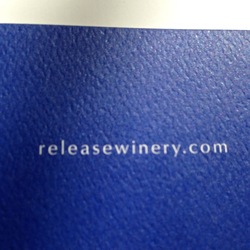





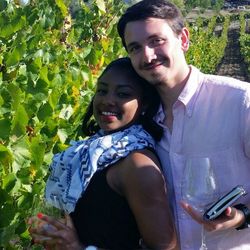





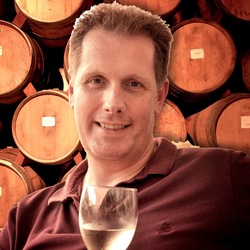



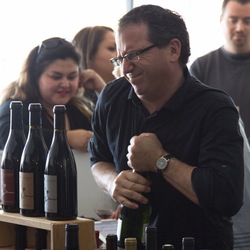

Sipping Fine Wine
Founded in 1986 by Josep-Maria Raventos, member of the Codorníu family, creating a small, quality-oriented winery standing apart from the large co-ops. A blend of 40% Xarel-lo, 36% Macabeu, 18% Parellada, 6% Monastrell. Red berry and floral aromas with fine bubbles. On the palate strawberry and cherry with mineral yeasty notes on the lingering finish, good balance. Hand harvested and secondary fermentation rests for 15 months before disgorgement. A nice bargain. Tasting Sample. — 7 years ago